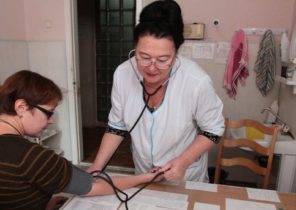A new struggle for leadership in women’s figure skating
Recently the whole world saw the news that Russian medalist in figure skating Alexander Trusov went to train for another trainer. She left her longtime mentor Eteri Tutberidze and will work under the direction of Evgeny Plushenko.
Trusov is the owner of the world’s highest rating for any program. She owns 4 types of quads. Alexandra is in the group of “three Russian princesses of figure skating”, which in season 2019-2020 shocked the world. The other two are Alyona Kostina (16) and Anna Shcherbakova (16). They are all girls of the school Tutberidze. It they honed their fantastic jumps. It is from the school, after a brilliant victory in the Junior championship they have achieved amazing victories in the Grand Prix final in the adult category. The three Russians took all three medal places on the podium of the Grand Prix final in Turin. The representative of Japan, Rick Kihira left fourth.
From the Russian girls was expecting a lot for planned for March of this year, the world Championships in Montreal, but unfortunately, because of the pandemic coronavirus the world championship on figure skating has been canceled.
Last year I was among the fans at the “Super Stage” at the world Championships in Saitama and saw with my own eyes the victory of Alina Sagitova, another student of Eteri Tutberidze. I often think that were conquered by the spirituality and beauty of Sagitova.
However, in December, Alina announced the suspension of his sporting career. And throughout the year, the balance of power in women’s figure skating has changed dramatically.
One should not rush with the “change of generations”
Because of the coronavirus 2019/20 season seems already very far, but there are many things that you should remember. As for the skaters, the media spilled an avalanche of frightening information and opinions about a sharp decline in age division athletes.15-year-old and 16-year-old skater, just shortlisted for the adult category, dominated at all stages of the Grand Prix, and only a 17-year-old Sagitova already forced to interrupt their performances. These events have caused controversy about too rapid change of generations in women’s figure skating.
Then rang the words that I still can’t forget: “Women’s figure skating is a sport which can succeed only children”.
Said my friend, a big sports fan when I learned about the confusion caused by the departure of Sagitova. If the athlete is 17 years old ponders the end of his career, this opinion is quite justified. She Sagitova said that I would return to the ice, and its decision is not tantamount to quitting the sport. However, the victory of young girls, apparently, will continue. But I strongly disagree with the fact that women’s skating is a sport only for the young.
One of the important reasons for the benefits of young athletes lies in their ability to perform complex jumps. Now in the Arsenal of many of them have different quads and a triple Axel. Of course, young age is not an absolute guarantee of success. The Japanese team odinochnits a lot of young athletes, but few of them win major competitions. But the fact remains: with age, the ability of skaters to perform high complexity jumps are reduced.
When young age and incomplete formation of the body be a weapon to help you win
The problem of “rejuvenation” of figure skating, especially highlighted against the background of the great victories Alina Sagitova, actually not so new.
15-year-old Tara Lipinski, for example, won the gold medal at the Olympic games in Nagano in 1998, beating the favourite of the tournament Michelle Kwan with two cascades of difficult triple jumps.
Then in College I am very involved in figure skating and together with his friends was watching all the twists and turns of the Olympic tournament of figure skaters in Nagano. We were absolutely convinced of the victory of Tara Lipinski, considering that figure skating is a sport and it is honestly won in wrestling. But still deep down we all remained for some slight feeling of dissatisfaction. It probably comes from the idea that Lipinski just moving from Junior into adult, too quickly achieved victory.
Later I, as I seem to have found the cause then of my feelings in the book Kotaro Sawaki “movie Theater, bookstore and a stadium”, which the author wrote after the Games in Nagano in 2005. There Mr. Sawaki wrote the following lines:
“Women’s figure skating too “fixated” on the jumps and in some sense hostile to adult skaters with Mature bodies.”
“The athlete with higher skills competing at the highest level with opponents of the highest class. The battle in the free program between Tara Lipinski and Michelle Kwan, which was to give the impression of “perfection” of this action, made me think that something is missing. And it was the feeling that they, especially Tara Lipinski, they use their youth as a weapon”.
So here’s the thing! My sense of some dissatisfaction arose due to the fact that Tara Lipinski too stressed used their youth as a weapon.
Since then it’s been more than 30 years. Figure skating made a huge leap forward. Changed and rules. There is an amazing skater, combining youth and maturity. For example, the Russian woman Alyona Kostina. Sometimes you catch yourself thinking about how you managed this beautiful 16-year-old figure skater to combine youth and maturity is amazing.
One coach is a veteran of figure skating once said in an interview: “Why girl skater can’t jump when you grow up? Because it’s a woman’s body”.
This problem is an ancient one. And of course, it escalated today, in the age of quads. In this regard, the International skating Union considers the various proposals. Among them — increasing the age of transition skaters from Junior to adult, the balance of marks for technique and artistic impression, etc., Because figure skating is a well — organized sport, there is a lot can be achieved through adequate and reasonable adjustment rules.
On the other hand, history proves that even adults of a skater are able to show themselves on the ice. For example, Shizuka Arakawa at 24, took the Olympic gold at the Olympics in Turin 2006, Carolina Kostner, the bronze medalist of the Sochi Games, remained in the sports elite and after 30. Even if such cases are rare fans that is encouraging.
Figure skating is a comprehensive art
Another point for thought is that figure skating is not only sport. According to the famous Japanese figure skater Tatsuki of Matadi, figure skating is a “comprehensive art,” so it is something that Matures with age.
Young skater have an advantage because of the ease in jumping, but it is not equivalent to saying that in women’s figure skating “can defeat only children”.
Still in my heart lives filled with great skill and sensuality of the performance of Mao Asada free program at the Olympics in Sochi. In moments of repose again and again, revise it and draw in the art of Mao’s mental strength.
Or Michelle Kwan. Defeated by Tara Lipinski at the Olympics in Nagano, she four years later again came to the Olympics in salt lake city, where he took the bronze medal, with a small inaccuracy in the jump. Current skater usually have perfected over the years by technique and expressiveness skating, which permanently sink into the soul of their fans.
I’m not saying that, with his expressive skating, the skater may not win tournaments. Every athlete strives to win. Figure skating fans also like it when their idols win. And jumps thus remain an important element of the equipment of the skaters. And the advantage of them still belongs to the young. But this does not mean that to win on the ice “can win only children.”
Figure skating is a sport, but it contains not only sports items. As the girls jump and defeat gravity in a period of growth? How to achieve expression Catania? Figure skating today, as before, stands before difficult challenges, and I, as a fan with 40 years of experience, these calls like.







